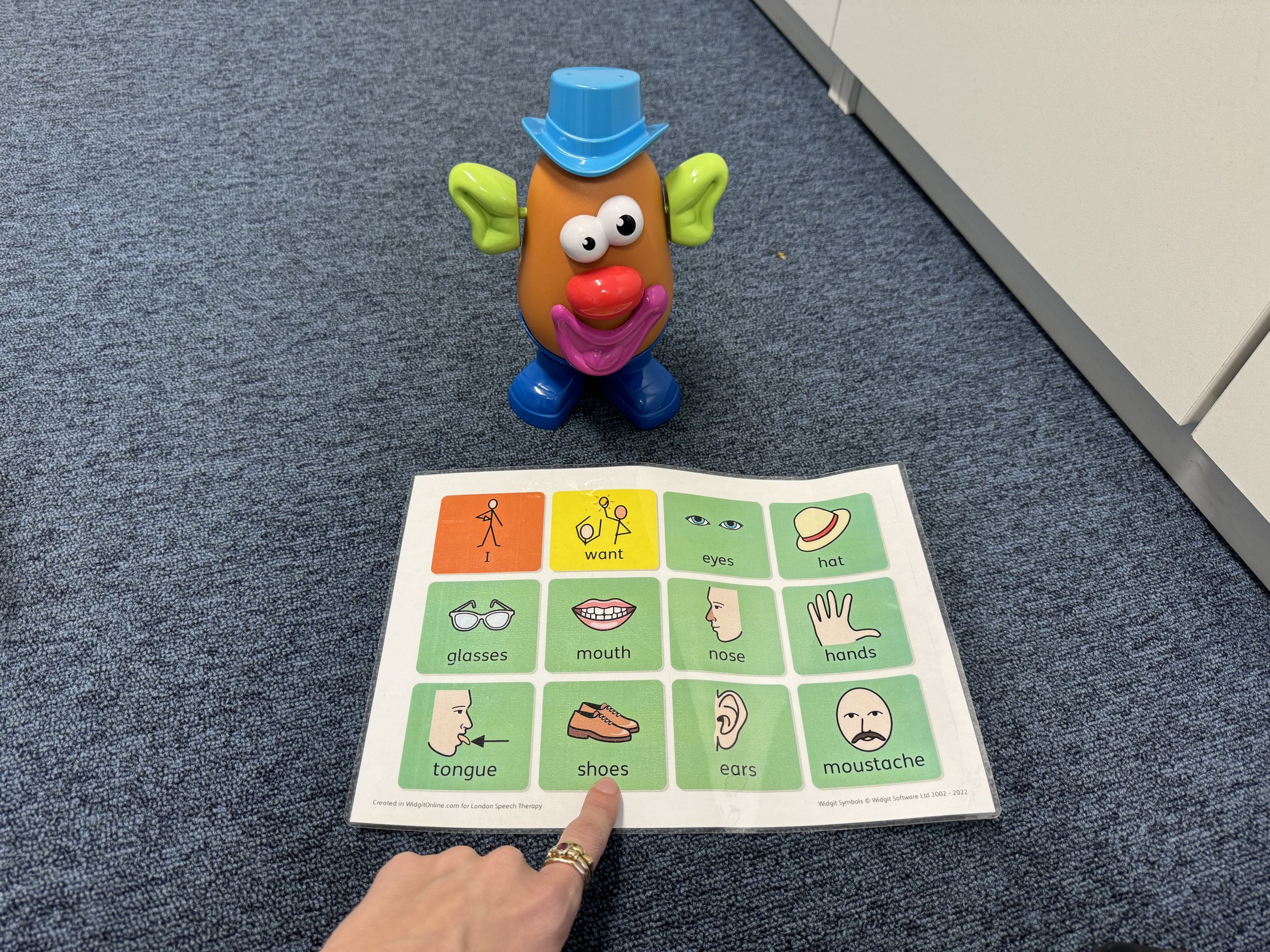A Day in the Life of a SLTA…
Our wonderful Speech and Language Therapy Assistant (SLTA) Eliza takes us through a day in the life of a busy SLTA!
The day begins early as I arrive at the school, setting up in my workspace to get ready for a productive day! My morning starts with organising my admin tasks: I check and respond to emails and gather together any resources I’ll need for that day; these typically include colourful semantics materials, turn-taking activities, core-boards, and sensory objects. Each of these plays a crucial role in supporting communication and engagement with these particular students on my caseload.
The first student I see is working on requesting skills, specifically using a coreboard without support. Additionally, we’re progressing towards building simple sentences using the Colourful Semantics Programme, focusing on a Subject-Verb-Object sequence with an 80% accuracy target. This sequence helps establish a foundation for structured communication and sentence-building, which can be transformative for a child working on expressive language skills!
Afterwards, I work with another student targeting Blank’s Level II questions through Proloquo2Go. This student is also working on speech sound production, specifically for sounds they have difficulty with at the end of CVC (consonant-vowel-consonant) words. To keep our activities engaging, I often use picture cards, which allow for visual and tactile interaction with each sound target. Following this, I support the provision class during snack time, where many students practise requesting items using core-boards. It’s rewarding to watch them become more comfortable communicating their preferences independently. While having a quick cup of tea, I document my notes from the morning sessions to ensure all progress and adjustments are recorded.
After a short break, my focus shifts to a student working on emotional regulation and requesting. This session centres around helping them identify and communicate their feelings, which is often a critical area of growth for children with ASD. Later, I introduce Proloquo2Go to a student who recently received an iPad through a grant from NewLife Charity. The initial orientation to an AAC (Augmentative and Alternative Communication) device can be an exciting time for both the student, their family, and me, as we explore new ways for them to express their needs and preferences.
Lunch is usually a quiet time where I can enjoy a packed meal with some of my favourite foods and maybe a sweet treat to recharge for the afternoon!
The afternoon begins with a Lego Therapy group involving three students. Using structured turn-taking and cooperative play, I'm learning that Lego Therapy is a lovely activity to foster social communication and teamwork, and I love seeing them gain confidence in both skills! Following the group, I work one-to-one with another student on Colourful Semantics and expressing their emotions. This student is also practising using various agent names and action words with accuracy, particularly in sensory-based activities where they describe actions like "Miss Eliza open vinegar" or "Eliza squeeze bottle." These specific phrases give them tools to communicate more precisely in a fun, structured environment.
As the school day winds down and the students head home, I take the time to touch base with teachers to share observations, discuss upcoming goals, and gather feedback on what is working well. Then, I finish up my notes, ensuring all records are detailed and up-to-date. This is also when I start preparing any resources I’ll need for the following week.
Finally, with everything in order, I make my way home. My favourite ways to decompress from the day include listening to a podcast, reading a book or doing a crossword. Working as a Speech and Language Therapy Assistant in schools is as demanding as it is rewarding, and each day brings its own unique challenges and successes that make the work incredibly fulfilling.





